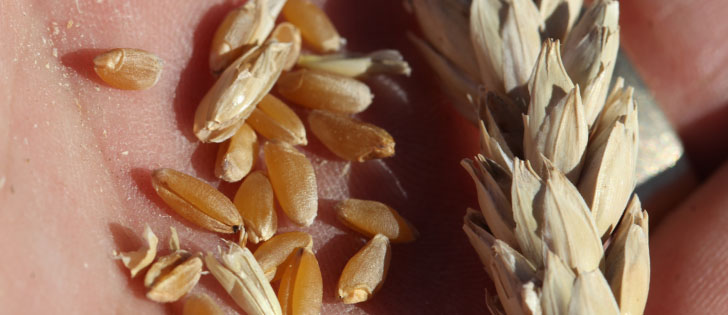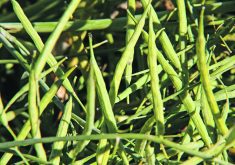Canadian canola acreage has increased to 16.1 million tonnes in 2010 from 11.5 million in 2003, but this gain may come with a huge risk.
Allan Preston, a former assistant deputy minister with Manitoba Agriculture, worries that western Canadian farmers are pushing canola rotations to the limit, which will inevitably lead to a disease “train wreck.”
“What I’m seeing and what I’m doing on my own farm is that we’ve really shortened up the canola rotations,” said Preston, who runs a cow-calf operation and grows barley, oats, wheat and canola near Hamiota, Man.
Read Also

Agri-business and farms front and centre for Alberta’s Open Farm Days
Open Farm Days continues to enjoy success in its 14th year running, as Alberta farms and agri-businesses were showcased to increase awareness on how food gets to the dinner plate.
“Historically with canola we used to go three years, sometimes four years, between canola.”
However, many growers have abandoned traditional canola rotations as prices skyrocketed in the past five years.
“We’re working on a two-year rotation right now, so I’m no better than those other folks. I’m on the same train track,” Preston said during a panel discussion held at the University of Manitoba in April.
He said tight canola rotations could eventually lead to widespread and severe outbreaks of blackleg and sclerotinia.
“Any of these diseases can hibernate and transmit from the stubble into next year’s crop,” said Preston.
“When you have that rapid increase in acreage, you run the risk of disease moving from field to field.”
He said farmers in his area needed to drive several kilometres between canola fields 15 years ago, but now it seems like there’s a quarter section of canola on both sides of every mile road.
Preston said the tight rotations and emphasis on one crop means western Canadian farmers may soon repeat historical mistakes.
“You can roll back the clock 80 years to the rust epidemics … when the only crop out there was wheat.”
Anastasia Kubinec, an oilseed specialist with Manitoba Agriculture, isn’t convinced canola growers are minutes away from a disease wreck, but conceded it is a potential problem.
Kubinec said 10 to 15 years ago producers used a rotation of canola, wheat, flax, barley, canola or a rotation of canola, wheat, peas, oats, canola.
But now, based on Manitoba crop insurance records, 35 to 40 percent of producers grow canola every other year.
“We may be setting ourselves up for major issues in the future. He (Preston) is right. The rotations have definitely tightened up in the last 10 years.”
She said blackleg is the most serious consequence.
“Sclerotinia is more of an environmental disease, whereas blackleg is very tied to rotations.”
Manitoba growers who have maintained a canola, wheat, canola rotation for several years are already beginning to notice higher levels of blackleg, she said.
“It’s really not the second (rotation) cycle that you’re seeing issues, but once you get to that third cycle, then they do start to see things like blackleg.”
Scientists are also finding a more diverse population of blackleg spores on infected plants, compared to only one group of pathogen strains, called PG2, that was typically found 15 years ago.
“Now when they go into fields … they’re finding other patho-groups. There are three other ones. And within that they’re finding isolates within those different patho-groups,” she said. “The combination of blackleg that a guy can have in his field is over 200 potentials.”
Kubinec said there is evidence that blackleg is limiting yields, but producers aren’t noticing the impact because canola genetics and improved yield potentials are masking the losses.
Preston conceded that he and other farmers probably won’t change course because potential returns from canola are so tempting.
“If I can grow a 50 bushel canola crop every second year, it’s going to take a wreck to convince me to change my practices.”
However, he said the demise of mixed farms on the Prairies is part of the problem. Producers would be encouraged to adopt beneficial rotations if more of them had livestock and grain, he added.
“With mixed farms, you are sort of forced into a different type of rotation, with forages, barley to feed the cows and canola as a cash crop. Without livestock, forages don’t fit and the tendency to grow feed grains is greatly reduced,” he said. “Monoculture is much more apt to happen in specialized grain and oilseed farms.”















